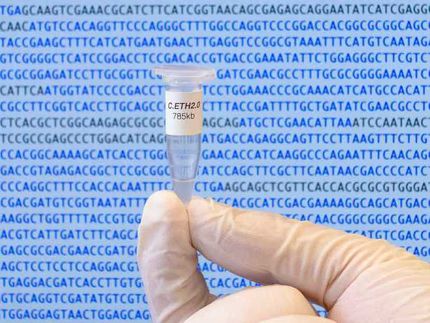Scientists develop strategy to rapidly describe outbreak strains with next-generation DNA sequencing
Advertisement
In the event of an outbreak or a bioterrorist attack, rapid identification of the genetic changes responsible for virulence or drug resistance is essential to mounting an effective response. Standard DNA sequencing and analysis of a pathogen genome is time-intensive and likely impractical during an emergency. Researchers have now developed a comparative genomics strategy to drastically reduce the time needed to accurately identify unique genetic properties of a potential outbreak strain. This report, which demonstrates the approach using next-generation sequencing technology, is published in Genome Research.
Sanger DNA sequencing, the established technology used to sequence the genomes of many species, including the genomes of humans and hundreds of bacteria, could potentially be used to sequence and analyze a new human pathogen. However, the time required for sequencing and subsequent analysis, or "finishing," is such that this approach is not feasible when a rapid response to an outbreak or bioterrorist attack is required. New sequencing technologies are now available, allowing an entire bacterial genome to be sequenced in several hours, but time-intensive finishing steps are still required to determine the complete genome sequence.
In this study, researchers led by Drs. Bernard La Scola and Didier Raoult of the University of the Mediterranean set out to determine whether a rapidly sequenced incomplete genome could be used to quickly characterize an outbreak strain by comparative analysis. "In the context of an outbreak, a quick approach may help to identify immediately the genetic determinants responsible for modified virulence or transmission, explains La Scola. "The aim of this work was to evaluate the recently available automated pyrosequencing technology without finishing for this purpose."
F. tularensis, the causative pathogen of tularemia, is one of the most infectious bacteria known, and there is particular concern that this organism could be manipulated for use as a biological weapon. La Scola and colleagues sequenced a strain isolated from a tularemia patient using the Roche/454 Life Sciences GS20 sequencing system, and compared these sequences with several other strains of F. tularensis, including a strain with reduced pathogencity and an antiobiotic-resistant strain.
The researchers demonstrated that next-generation sequencing of a bacterial genome without finishing could be used to effectively identify several unique features of the F. tularensis clinical strain in a matter of weeks. "By using this strategy, if there are a sufficient number of bioinformaticians working on the project, DNA extraction to complete analysis of the genome can take approximately 6 weeks," describes La Scola. "We demonstrated that this strategy was efficient to detect gene polymorphisms such as a gene modification responsible for antibiotic resistance, and loss of genetic material." Furthermore, La Scola and colleagues were able to distinguish the clinical strain from 80 other strains of F. tularensis.
While high-throughput sequencing technology and the comparative genomic analysis strategy outlined in this work have significantly decreased the time required for characterization of an outbreak strain, La Scola notes that future advances in software for sequence data analysis and genome comparison could speed up the process even further.
Original publication: La Scola, B., Elkarkouri, K., Li, W., Wahab, T., Fournous, G., Rolain, J., Biswas, S., Drancourt, M., Robert, C., Audic, S., Löfdahl, S., and Raoult, D.; "Rapid comparative genomic analysis for clinical microbiology: The Francisella tularensis paradigm."; Genome 2008.

























































